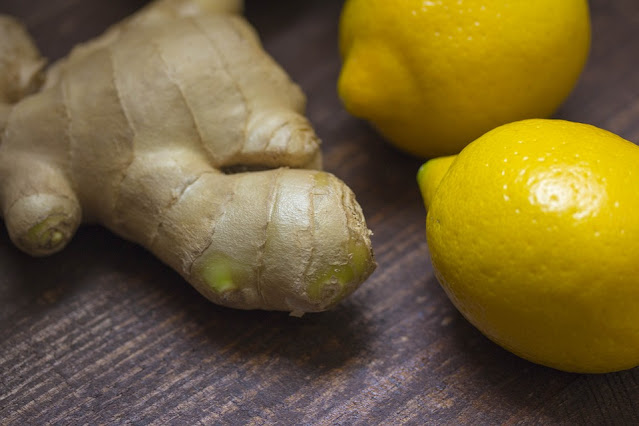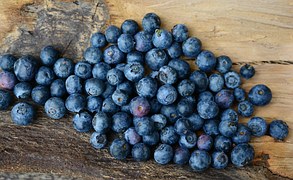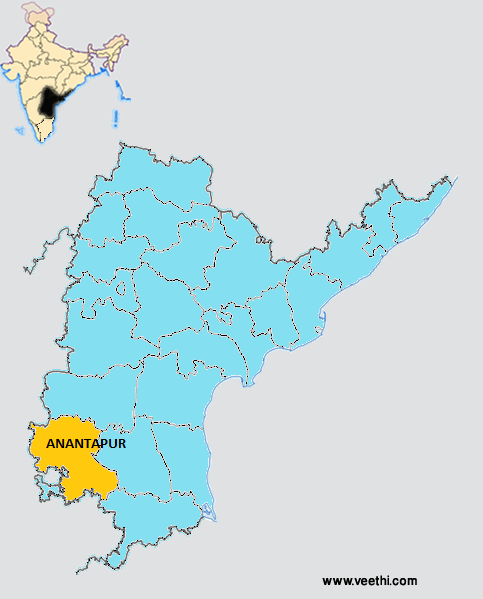COVID - 19: Native nutrition during disasters
A variety of dishes can be made with the simplest of ingredients... anywhere in the world.
Almonds are a source of Vitamin B 12, is a source of plant based protein that includes Riboflavin. Makes a great between meal snack and roasted almonds make interesting and tasty nourishing snacks especially for those in disster shelters; its also easy to roast...
Apricots though not a tropical fruit, is grown in temperate zones in India. Dried apricots - a processed food - makes nutritious snacks especially for those suffering from co-morbidities in these COVID 19 times...
Bittergourds is an quintessential vegetable for Diabetics... Reduces risk during disasters like in the current pandemic when medicines may run out of stock for Diabetics.
Beetroots and carrots are tubers which serve well as raw salads for people in disaster shelters - especially so for people suffering from co-morbidities.
Nutritious grapes ... make filling and healthy snacks and salads
Quintessential and ubiquitous Indian Breakfast - Idlis - made of rice flakes and lentils offers a perfect balance of 3 portions of carbohydrates with 1 portion of proteins - eaten with vegetable sambhar and chutney pleases the tongue as well asstomach!
Unseen enemy - COVID 19 is manifesting in unbeknown ways on the human race.
Colouring cauliflowers is perhaps not the healthiest marketing strategy...
Lentils are a source of culturally sanctioned source of plant protein.
Incredible as it may sound India hosts the biggest variety of green leafy vegetables. Green leafy vegetable dish has to be a[part of every meal to attain nutrition balance.
Dill makes a very tasty and healthy food supplement goes with millets, rice, lentils, wheat, vegetables, fruit, milk,. as well as dairy products. What a versatile healthy green nutritious blessing!
The Maasala Dosa is the ultimate healthy tasty breakfast, counted as one of the top ten best food items of the world!. But it demands a lot of loving labour not ideal for making for hundreds / thousands of people in disaster shelters. If there is enough labour and the right kinds of utensils to make it, it will be lovingly, gratefully relished by people...
Dill placed on poached eggs... makes it flavoursome! Dry food rations, but may not be culturally acceptable in largely Hindu India. But places like north-eastern states, island territories, may find it acceptable in disaster shelters.
Dry fruit dumplings and lentil dumplings are also ideal plant based protein sources and easy on logistics, supply chain and health index for people in disaster shelters.
Fruit baskets are ideal for logistics, supply chain and nutrition index for people in disaster shelters.
Leech stems are ideal for tasty and nutritious soups that please the Indian palate,
The power that fenugreek seeds pack up for the sheer variety of cuisines it lends itself too, is an amazing source of nutrition especially for the Diabetic capital of the world!
Fenugreek leaves are a source of infinite culinary experiments as well as nutrition index... Regardless of the slightly bitter taste, it lends a super rich taste enhancement.
The agricultural diversity that obtains in the Subcontinent makes for infinite culinary choices peculiar to regions, ... it has been shaped by the agrometeorological conditions and agro diversity based traditions.
Freh fig is a nutrition supplement in the subcontinent.
Hibiscus has medicinal properties.
A straw based barnyard in rural India.
Rotis being made in Pakistan...
The fruit yield in India offers food security. Well managed, our agricultural legacy can forfeit us from both future disasters and food insecurity.
Garlic has multiple health benefits but is not universally culturally acceptable thanks to its pungent odour. It can also be allergesic for some people, hence does not make the race for universal acceptance.
Turmreic is an all important spice of the Subcontinent, mandatory in cooking anything on the stove...
Amla or gooseberry has multiple health benefits and makes a succulent yet tasty supplement.
Bon appetite!
Grape vineyards are used for its horticultural benefits in India...
Cauliflower greens, parsnips ... all have culinary significance in the subcontinent.
Mint and Dill tea... incredible are the diverse samples of culinary creativity in the Subcontinent.
White hibiscus has benefits for menstruating women according to Ayurveda
Mushroom makes a source of plant protein.
Vegetarian food does not mean only raw vegetables!
Airplane Food prepared to denote the Indian tricolour.
herbs lentils, spices, can make a balanced meal even without carbs.
The mortar and pistle makes the most authentic of spice mixtures, even today!
The kiwi has a native substitur=e in star fruit.
Lemon grass is quintessential to Thai cooking.
Authentic cooking!
Lentil is a staple plant protein source for large number of Indians.
Colourful cooking ingredients.
Asparagus is not exactly central to South Asian cuisine.
Dry fruits are native to south sia, Southeast and Central Asian cuisines...
Garlic is not entirely welcome in mass cooking thanks to its strong flavour / odour... nevertheless its taste value for those who cherish it makes it popular among its consumers.
Millets are gaining in popularity in the Day and Age of Diabetes gaining pandemic proportions.
A non native citrus fruit is an extremely juicy and succulent citrus fruit that readily offers Vitamin C and zinc among other nutrition values to those in need of food security.
Sprouts are a source of plant protein, Defers to micro nutrient compliant native nutrition, and conducive to agro meteorological conditions. 
Toor Dal also called Arhar Dal is the staple food for most people in the subcontinent.
Coloured bell peppers are not exactly native unlike Green peppers. But adapts well to native cooking.
Blue berries or black grapes makes for great native desserts, ... offering possibilities of nutritional supplements, healthy between meal snacks etc...
Native fruits make healthy nutritional supplements.
Similarly, native vegetables make for diverse sources of native nutrition.
The tropics are blessed with diverse sources of plant protein.
The traditional plaintain leaf meal offers a complete balanced meal of complex carbohydrates...
Mixed vegetable salads are so rich in minerals and vitamins, yet lack complex carbohydrates and essential nutrients like minerals.
Spinach soups can be flavourful wholesome, filling and nutritious. It is said that it helps beat insomnia.
Spinach is the rare source of minerals like zinc which is often missing in vegetarian diets...
It is the sheer variety of spices that make South Asian cuisine so versatile and rich!
Spinach lends colour, protein, vitamins, and taste to fine dining in the subcontinent.
Nutmeg is the original seductress amongst Oriental spices that changed the course of human civilisation itself!
Starfruit makes a great source of vitamin C; offers food security.
Almonds are a source of Vitamin B 12, is a source of plant based protein that includes Riboflavin. Makes a great between meal snack and roasted almonds make interesting and tasty nourishing snacks especially for those in disster shelters; its also easy to roast...
Apricots though not a tropical fruit, is grown in temperate zones in India. Dried apricots - a processed food - makes nutritious snacks especially for those suffering from co-morbidities in these COVID 19 times...
Bittergourds is an quintessential vegetable for Diabetics... Reduces risk during disasters like in the current pandemic when medicines may run out of stock for Diabetics.
Beetroots and carrots are tubers which serve well as raw salads for people in disaster shelters - especially so for people suffering from co-morbidities.
Nutritious grapes ... make filling and healthy snacks and salads
Quintessential and ubiquitous Indian Breakfast - Idlis - made of rice flakes and lentils offers a perfect balance of 3 portions of carbohydrates with 1 portion of proteins - eaten with vegetable sambhar and chutney pleases the tongue as well asstomach!
Unseen enemy - COVID 19 is manifesting in unbeknown ways on the human race.
Colouring cauliflowers is perhaps not the healthiest marketing strategy...
Lentils are a source of culturally sanctioned source of plant protein.
Incredible as it may sound India hosts the biggest variety of green leafy vegetables. Green leafy vegetable dish has to be a[part of every meal to attain nutrition balance.
Dill makes a very tasty and healthy food supplement goes with millets, rice, lentils, wheat, vegetables, fruit, milk,. as well as dairy products. What a versatile healthy green nutritious blessing!
The Maasala Dosa is the ultimate healthy tasty breakfast, counted as one of the top ten best food items of the world!. But it demands a lot of loving labour not ideal for making for hundreds / thousands of people in disaster shelters. If there is enough labour and the right kinds of utensils to make it, it will be lovingly, gratefully relished by people...
Dill placed on poached eggs... makes it flavoursome! Dry food rations, but may not be culturally acceptable in largely Hindu India. But places like north-eastern states, island territories, may find it acceptable in disaster shelters.
Dry fruit dumplings and lentil dumplings are also ideal plant based protein sources and easy on logistics, supply chain and health index for people in disaster shelters.
Fruit baskets are ideal for logistics, supply chain and nutrition index for people in disaster shelters.
Leech stems are ideal for tasty and nutritious soups that please the Indian palate,
The power that fenugreek seeds pack up for the sheer variety of cuisines it lends itself too, is an amazing source of nutrition especially for the Diabetic capital of the world!
Fenugreek leaves are a source of infinite culinary experiments as well as nutrition index... Regardless of the slightly bitter taste, it lends a super rich taste enhancement.
The agricultural diversity that obtains in the Subcontinent makes for infinite culinary choices peculiar to regions, ... it has been shaped by the agrometeorological conditions and agro diversity based traditions.
Freh fig is a nutrition supplement in the subcontinent.
Hibiscus has medicinal properties.
A straw based barnyard in rural India.
Rotis being made in Pakistan...
Starfruit makes an excellent vitamin source and nutrition supplement. Rich in Vitamin C, it helps Diabetics with much needed and acceptable fructose.
Fruit bowls like this make great snacks for disaster refugees. The fruit yield in India offers food security. Well managed, our agricultural legacy can forfeit us from both future disasters and food insecurity.
Garlic has multiple health benefits but is not universally culturally acceptable thanks to its pungent odour. It can also be allergesic for some people, hence does not make the race for universal acceptance.
Turmreic is an all important spice of the Subcontinent, mandatory in cooking anything on the stove...
Amla or gooseberry has multiple health benefits and makes a succulent yet tasty supplement.
Bon appetite!
Grape vineyards are used for its horticultural benefits in India...
Cauliflower greens, parsnips ... all have culinary significance in the subcontinent.
Mint and Dill tea... incredible are the diverse samples of culinary creativity in the Subcontinent.
White hibiscus has benefits for menstruating women according to Ayurveda
Mushroom makes a source of plant protein.
Vegetarian food does not mean only raw vegetables!
Airplane Food prepared to denote the Indian tricolour.
herbs lentils, spices, can make a balanced meal even without carbs.
The mortar and pistle makes the most authentic of spice mixtures, even today!
The kiwi has a native substitur=e in star fruit.
Lemon grass is quintessential to Thai cooking.
Authentic cooking!
Lentil is a staple plant protein source for large number of Indians.
Colourful cooking ingredients.
Asparagus is not exactly central to South Asian cuisine.
Dry fruits are native to south sia, Southeast and Central Asian cuisines...
Garlic is not entirely welcome in mass cooking thanks to its strong flavour / odour... nevertheless its taste value for those who cherish it makes it popular among its consumers.
A non native citrus fruit is an extremely juicy and succulent citrus fruit that readily offers Vitamin C and zinc among other nutrition values to those in need of food security.

Pea and spinach soup flavoured with mint makes a heady cocktail of proteins, vitamins minerals and tangy tastes...
Toor Dal also called Arhar Dal is the staple food for most people in the subcontinent.
Coloured bell peppers are not exactly native unlike Green peppers. But adapts well to native cooking.
Blue berries or black grapes makes for great native desserts, ... offering possibilities of nutritional supplements, healthy between meal snacks etc...
Native fruits make healthy nutritional supplements.
Similarly, native vegetables make for diverse sources of native nutrition.
The tropics are blessed with diverse sources of plant protein.
The traditional plaintain leaf meal offers a complete balanced meal of complex carbohydrates...
Mixed vegetable salads are so rich in minerals and vitamins, yet lack complex carbohydrates and essential nutrients like minerals.
Spinach soups can be flavourful wholesome, filling and nutritious. It is said that it helps beat insomnia.
Spinach is the rare source of minerals like zinc which is often missing in vegetarian diets...
It is the sheer variety of spices that make South Asian cuisine so versatile and rich!
Spinach lends colour, protein, vitamins, and taste to fine dining in the subcontinent.
Nutmeg is the original seductress amongst Oriental spices that changed the course of human civilisation itself!
Starfruit makes a great source of vitamin C; offers food security.














































































Comments
Post a Comment